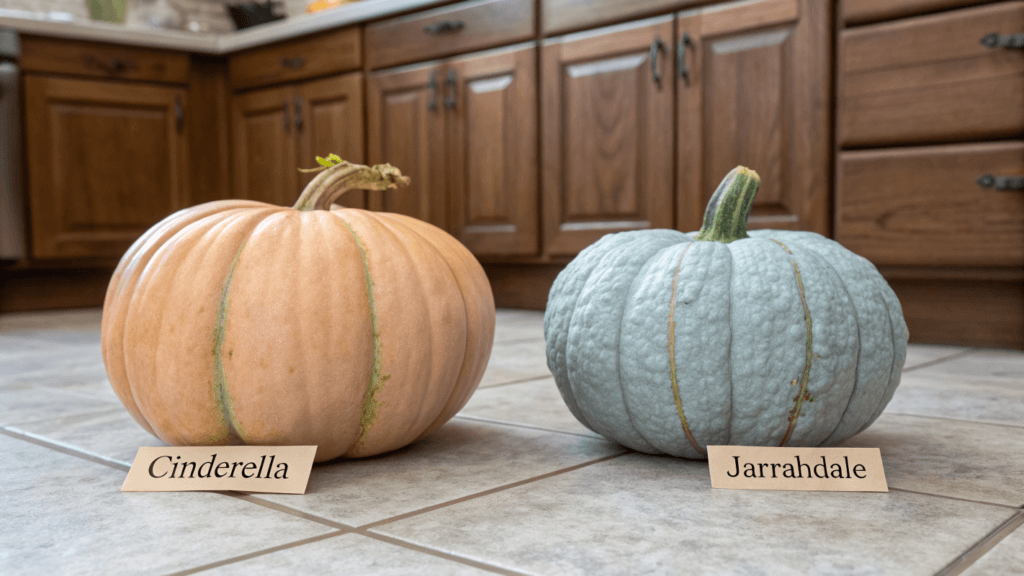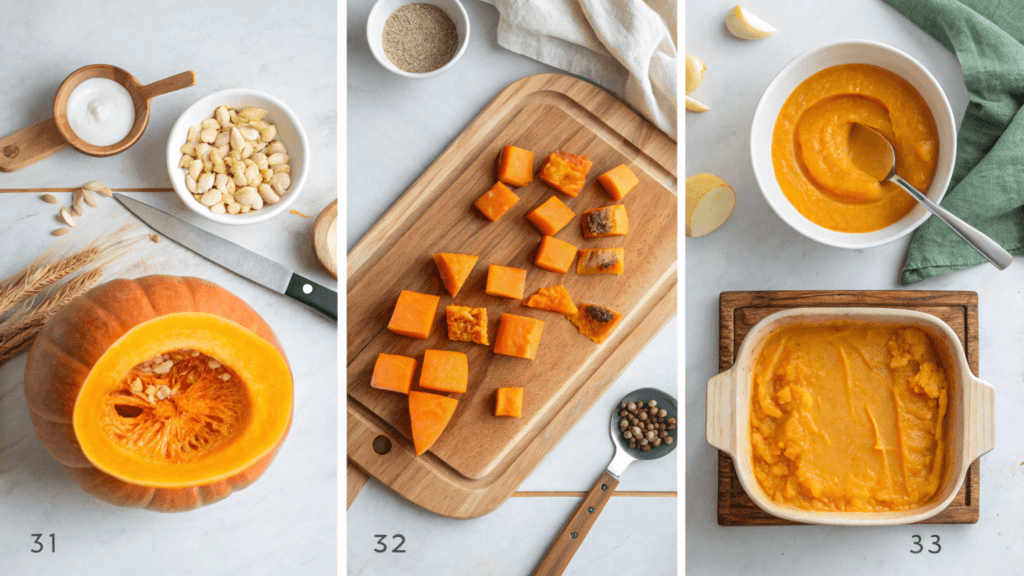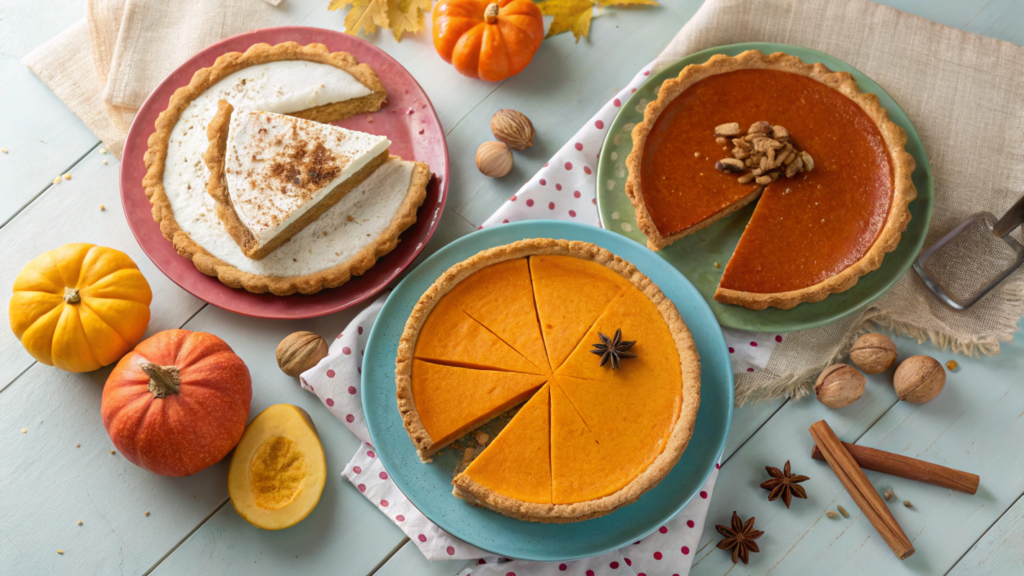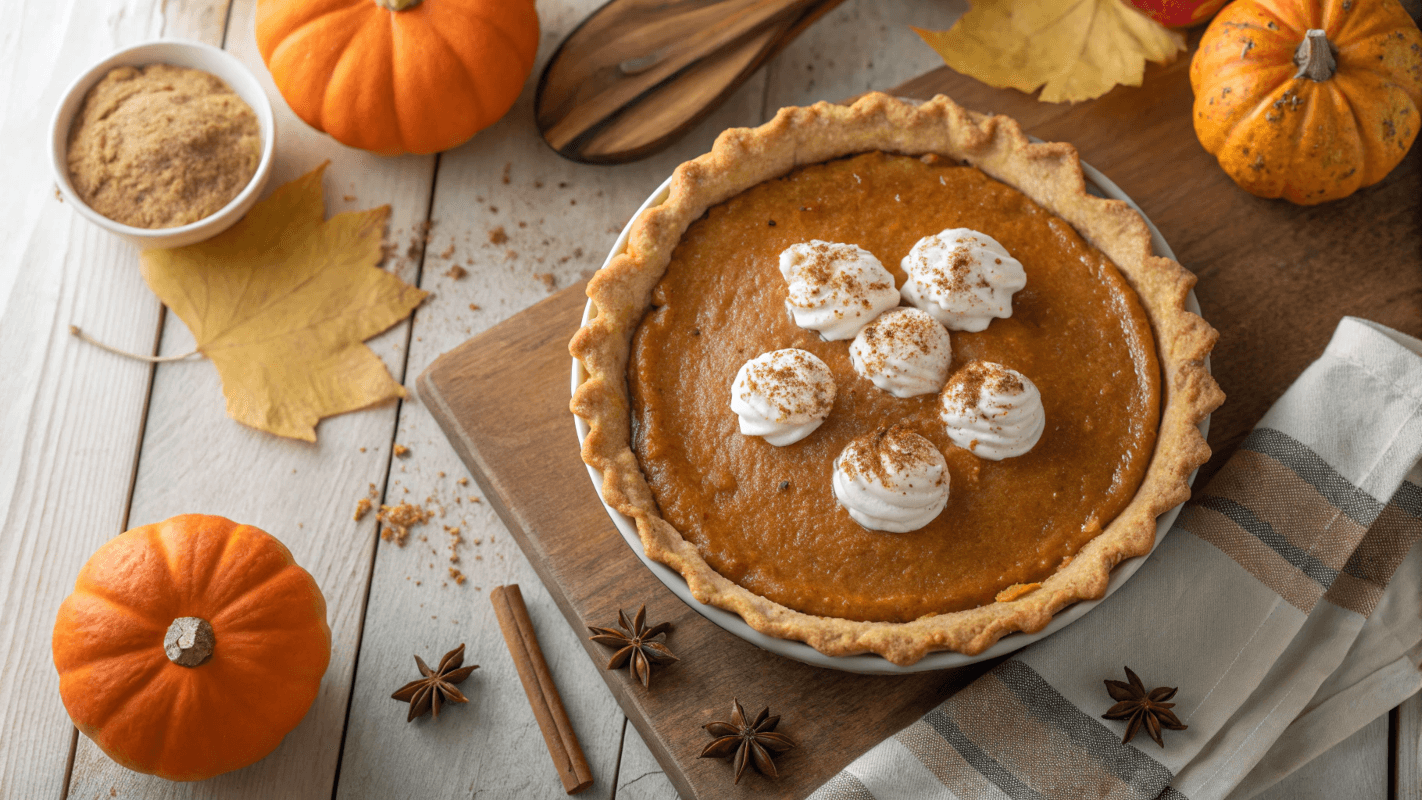Finding the perfect pumpkin for your pie can feel like a daunting task. With so many options, it’s easy to wonder, what is the best pumpkin for pie filling? The good news is that creating a rich, flavorful pumpkin pie doesn’t have to be complicated. Choosing the right pumpkin makes all the difference, transforming your dessert from ordinary to extraordinary. First, let’s dive into how to pick the perfect variety.
Next, imagine a pie with creamy texture, natural sweetness, and a flavor that warms every bite. That’s what the right pumpkin can do! Whether you’re a seasoned baker or trying this for the first time, knowing which pumpkins work best can save time and ensure delicious results. Keep reading to discover how to elevate your pumpkin pie game and make this holiday classic unforgettable. You’re going to love these tips!
Table of Contents
Top Pumpkin Varieties for Perfect Pie Filling
Why Sugar Pumpkins Are the Gold Standard for Pie
Sugar pumpkins, also called pie pumpkins, are a top choice for pie filling. These small, round pumpkins are rich in natural sweetness, making them ideal for baking. Their flesh is dense, which means less water content and a smoother texture in your pie. First, sugar pumpkins are easy to work with, as their skin peels off effortlessly after roasting.
Next, their size is perfect for small recipes, reducing waste. Also, sugar pumpkins provide consistent flavor, ensuring your pie tastes amazing every time. Unlike decorative pumpkins, these are cultivated specifically for cooking. In addition, they store well, so you can buy them early and use them when ready.
| Feature | Benefit |
|---|---|
| Dense Flesh | Smooth texture in pie |
| Naturally Sweet Flavor | Requires less added sugar |
| Easy to Prepare | Saves time during baking prep |
If you’re deciding on the ideal milk to enhance your pie’s flavor, Use Condensed Milk or Evaporated Milk in Pumpkin Pie offers a helpful comparison to make the right choice.
Discover Lesser-Known Pie Pumpkins: Jarrahdale and Cinderella
Jarrahdale and Cinderella pumpkins add unique flavors and flair to pies. Jarrahdale pumpkins, with their bluish-gray skin, have a mildly sweet, nutty taste. Their firm texture creates creamy, velvety fillings. On the other hand, Cinderella pumpkins are vibrant orange and boast a buttery sweetness. They’re easy to puree, making them beginner-friendly.

Both varieties are versatile and can be combined with sugar pumpkins for bold flavors. When roasted, their natural sugars caramelize, enhancing the depth of your pie. Plus, these pumpkins look stunning on your countertop until baking day. For a balanced filling, mix these pumpkins in equal parts. The result? A pie that’s rich, smooth, and packed with layers of flavor.
Fresh Pumpkin vs. Canned Pumpkin: What Works Best?
The Case for Fresh Pumpkin in Homemade Pies
Fresh pumpkin is a fantastic option for those who enjoy hands-on cooking. Roasting fresh pumpkins brings out their natural sweetness. Additionally, it allows you to control the flavor profile of your filling. Freshly pureed pumpkin often has a more vibrant taste compared to canned alternatives.
Next, fresh pumpkin enables you to experiment with different varieties, like sugar or Jarrahdale pumpkins, for custom flavors. However, it does require extra time for cleaning and roasting. Still, many home bakers find the effort worthwhile for the enhanced flavor.
Convenience and Consistency: Why Bakers Love Canned Pumpkin
Canned pumpkin is the go-to choice for convenience. It’s pre-pureed, saving time during preparation. Additionally, canned pumpkin offers consistent texture and flavor, which is perfect for quick recipes.
- Pros of Canned Pumpkin:
- Saves time and effort.
- Ideal for beginner bakers.
- Widely available year-round.
- Cons of Canned Pumpkin:
- Slightly less fresh flavor.
- Limited variety in taste profiles.
Learn how to maximize efficiency in the kitchen with The Ultimate Guide to Perfect Pancake Recipe Without Eggs, which offers adaptable tips for creating smooth and delicious batters.
Key Characteristics of the Best Pie Pumpkins
Flavor Profiles: Sweetness and Depth in Pie Pumpkins
Pie pumpkins are known for their mild sweetness and nutty undertones. Sugar pumpkins provide a classic flavor, while Cinderella pumpkins add buttery notes. To enhance sweetness, roasting the pumpkin is key. Also, pairing these pumpkins with spices like cinnamon or nutmeg deepens the flavor.
Texture and Moisture: The Secret to Silky Pumpkin Filling
The texture of pie pumpkins should be dense, not watery. High moisture content can lead to soggy pies. Sugar and Jarrahdale pumpkins excel in maintaining a creamy, smooth texture.
- Key Texture Tips:
- Avoid high-water-content pumpkins like carving varieties.
- Roast pumpkins to remove excess moisture.
- Blend thoroughly for the silkiest puree.
For inspiration on creating the perfect pumpkin pie, explore Pumpkin Pie Recipe with Condensed Milk for insights into achieving a rich and creamy texture.
How to Select and Prepare the Perfect Pumpkin
How to Choose the Right Pumpkin at Farmers’ Markets
Selecting the right pumpkin starts with size. Look for small to medium pumpkins, as they tend to have sweeter flesh. The skin should be free of blemishes and feel firm to the touch. A ripe pumpkin will feel heavy for its size.
Easy Steps to Clean, Roast, and Puree Fresh Pumpkin
Cleaning and roasting a pumpkin is simple. First, cut the pumpkin into halves and scoop out the seeds. Next, roast it at 375°F for about 40 minutes until tender. Let it cool, then peel off the skin and puree the flesh in a blender.

| Step | Description |
|---|---|
| Cutting | Halve and deseed the pumpkin |
| Roasting | Bake until fork-tender |
| Pureeing | Blend until smooth |
Creative Pie Variations Using Different Pumpkin Types
Mixing Pumpkin Varieties for Bold and Unique Flavors
When it comes to pumpkin pie, experimenting with different pumpkin types can elevate your dessert to a new level. Combining varieties like sugar pumpkins, Jarrahdale pumpkins, and Cinderella pumpkins creates a medley of flavors and textures. For example, sugar pumpkins add a naturally sweet and creamy base, while Jarrahdale pumpkins introduce a nutty depth. Adding a touch of Kabocha pumpkin, known for its rich and buttery flesh, brings a satisfying velvety texture.
Layering pumpkin varieties lets you tailor the flavor profile to your liking. First, consider mixing sugar and Cinderella pumpkins for a sweeter, lighter pie. Next, for a more robust and earthy taste, blend Jarrahdale with Kabocha. Finally, roasting each variety separately allows their unique flavors to shine. This method enhances caramelization and provides a balance of sweetness and nuttiness that is hard to achieve with a single type.
To create a standout pie, consider these blend ideas:
| Pumpkin Variety | Flavor Profile | Suggested Pairing |
|---|---|---|
| Sugar Pumpkin | Sweet and mild | Perfect with cinnamon and nutmeg |
| Jarrahdale Pumpkin | Nutty and earthy | Best paired with cloves and ginger |
| Cinderella Pumpkin | Buttery and sweet | Great with allspice and cardamom |
| Kabocha Pumpkin | Rich and creamy | Excellent with vanilla and honey |

These blends are not only flavorful but also visually appealing. The slight variations in color from the pumpkin mix create a pie that’s as beautiful as it is delicious.
If you enjoy exploring unique recipes, consider the creativity behind Vegetarian Cinnamon Sugar Donut Muffins for an autumnal treat to pair with your pie.
Experimenting with Spices to Highlight Pumpkin Profiles
Spices are the soul of a great pumpkin pie, transforming the filling into an aromatic masterpiece. Traditional spices like cinnamon, nutmeg, and cloves are classic choices that complement most pumpkin varieties. However, experimenting with less conventional spices can add a creative twist.
For instance, cardamom provides a floral undertone that pairs beautifully with Jarrahdale pumpkins. Ginger, whether fresh or ground, adds a spicy kick that enhances the natural sweetness of Cinderella pumpkins. Additionally, using star anise or a pinch of Chinese five-spice can create an exotic flavor profile, ideal for adventurous bakers.
Here are some creative spice blends to consider:
- Warm Spice Blend: Cinnamon, nutmeg, cloves, and ginger.
- Exotic Blend: Cardamom, star anise, and allspice.
- Citrus-Infused Blend: Orange zest, ginger, and a dash of cinnamon.
Each spice mix brings out different characteristics in the pumpkin, allowing you to create a pie that stands out. Adjusting the spice level also makes the dessert more personal. For example, a light hand with spices keeps the pie mild and sweet, while a heavier sprinkle intensifies the flavor for a bold finish.
Adding Texture with Toppings and Mix-Ins
Pumpkin pie isn’t just about the filling—creative toppings and mix-ins can elevate the entire dessert. Adding crushed nuts, such as pecans or walnuts, to the filling gives it a delightful crunch. For an indulgent twist, swirl in some cream cheese or dark chocolate before baking. Alternatively, try a streusel topping made with brown sugar, butter, and oats for extra texture.
| Topping Idea | Flavor and Texture Benefits |
|---|---|
| Crushed Pecans | Adds crunch and nuttiness |
| Cream Cheese Swirl | Enhances richness and creaminess |
| Dark Chocolate Chips | Balances sweetness with slight bitterness |
The possibilities are endless when you start mixing pumpkin varieties and enhancing the flavors with spices and toppings. With these ideas, you’ll create pies that surprise and delight every time. Whether you stick to traditional flavors or venture into bold combinations, your pumpkin pie will be a show-stopping centerpiece at any table.
Now that you know the secret to picking the perfect pumpkin, let’s turn that knowledge into the ultimate pie masterpiece!
The Ultimate Pumpkin Pie Recipe: Choosing the Best Pumpkin for Perfect Filling
Ingredients
- Fresh Sugar Pumpkin (2 cups, pureed) – This sweet, rich pumpkin is the star ingredient, offering a smooth, velvety texture that’s ideal for pie filling. First, roast and puree it to unlock its natural sweetness.
- Evaporated Milk (1 cup) – Adds a creamy, subtle flavor without overwhelming sweetness, ensuring a balanced and luscious pie filling.
- Brown Sugar (¾ cup) – Brings warmth and a hint of molasses that perfectly complements the pumpkin’s earthy notes.
- Pumpkin Pie Spice (1 ½ teaspoons) – A delightful blend of cinnamon, nutmeg, ginger, and cloves to infuse your pie with classic fall flavors.
- Eggs (2 large) – Helps bind the filling while giving it a silky consistency.
- Vanilla Extract (1 teaspoon) – Adds depth and a subtle aromatic touch to enhance the overall flavor profile.
Step-by-Step Instructions
- Prepare the Pumpkin Puree
Start by cutting a sugar pumpkin in half and removing the seeds. Roast at 375°F for 45 minutes until soft. Puree in a blender. - Mix the Wet Ingredients
In a large mixing bowl, whisk the eggs, evaporated milk, and vanilla extract. Ensure the mixture is smooth and frothy. - Combine the Dry Ingredients
In a separate bowl, combine the sugar, pumpkin pie spice, and a pinch of salt. Slowly add this to the wet ingredients while stirring. - Add the Pumpkin Puree
Gently fold in the pumpkin puree, ensuring the mixture is evenly blended. The filling should be creamy and well-combined. - Fill and Bake
Pour the filling into a prepared pie crust. Bake at 350°F for 50-60 minutes until the center is set and a toothpick comes out clean.
Serving
This recipe makes one 9-inch pie, serving 8 people. Let the pie cool for at least two hours before slicing. Serve with a dollop of whipped cream or a scoop of vanilla ice cream for an indulgent treat. For a fresh twist, garnish with a sprinkle of cinnamon or chopped pecans. Pair it with hot apple cider or a spiced chai latte for the ultimate autumn dessert experience.
Tips and Hacks
- Make-Ahead Tip – Prepare the filling a day in advance to save time. Store it in the fridge until ready to bake.
- Alternative Sweeteners – Substitute brown sugar with maple syrup for a more natural sweetness.
- Pumpkin Substitutes – If sugar pumpkins are unavailable, try butternut squash for a similar texture and flavor.
- Perfect Crust – Blind bake your crust to prevent a soggy bottom. Line with parchment paper, fill with pie weights, and bake for 10 minutes before adding the filling.
Nutrition Facts
- Serving Size: 1 slice
- Calories: 250
- Fat: 10g
- Carbs: 35g
- Protein: 5g
- Sodium: 150mg
- Fiber: 3g
Note: Values are approximate and depend on ingredient brands and preparation methods.
Prep Time
- Prep Time: 25 minutes
- Cook Time: 60 minutes
- Total Time: 85 minutes
Note: Times may vary depending on oven and equipment
Frequently Asked Questions (FAQs)
Which canned pumpkin is best for pie?
Libby’s 100% Pure Pumpkin is a top choice for pies. It’s consistent, rich, and offers a velvety texture ideal for smooth fillings. First, it’s easy to find in stores. Next, it contains only pumpkin, with no added spices, giving you complete control over the flavors. Plus, it blends effortlessly with your pie ingredients. You’re going to love how it simplifies your pie-making process!
What is the difference between Libby’s pumpkin and pumpkin pie filling?
Libby’s 100% Pure Pumpkin is plain pumpkin puree, while pumpkin pie filling is pre-seasoned with sugar and spices. First, the puree allows customization of sweetness and spice. Then, pie filling saves time but limits flavor adjustments. Also, pie filling contains added sugar, so you may need to adjust your recipe. For flexibility and authentic flavor, plain puree is a better option.
Are Jack-O-Lantern pumpkins good for pies?
Jack-O-Lantern pumpkins aren’t ideal for pies. They’re bred for carving, so their flesh is stringy and watery. First, they lack the sweetness needed for a flavorful filling. Also, their texture doesn’t puree well, resulting in a less creamy consistency. Instead, choose pie pumpkins like Sugar or Cinderella varieties. These options are sweeter and denser, making your pie rich and delicious.
Conclusion: Master Your Pumpkin Pie Game with the Best Ingredients
Choosing the best pumpkin for pie filling can transform your baking experience and delight your taste buds. Sugar pumpkins, with their rich sweetness, are a gold standard. First, their creamy texture ensures a silky filling. Next, exploring options like Jarrahdale or Cinderella pumpkins adds unique flavors to your pies. Also, fresh pumpkins bring homemade charm, while canned pumpkin offers unbeatable convenience and consistency.
In addition, understanding your options allows you to adapt recipes to your taste and occasion. Whether you want a traditional pie or something bold, selecting the right pumpkin sets the foundation. Pair your choice with complementary spices, and you’ll create a pie that wows every guest. Finally, experimenting with different varieties can make every pie unique.
You’re going to love mastering the art of pumpkin pie! Start your next bake with confidence and enjoy the sweet rewards of thoughtful ingredients.


2 thoughts on “What Is the Best Pumpkin for Pie Filling? Discover the Top Varieties for Perfect Pies”